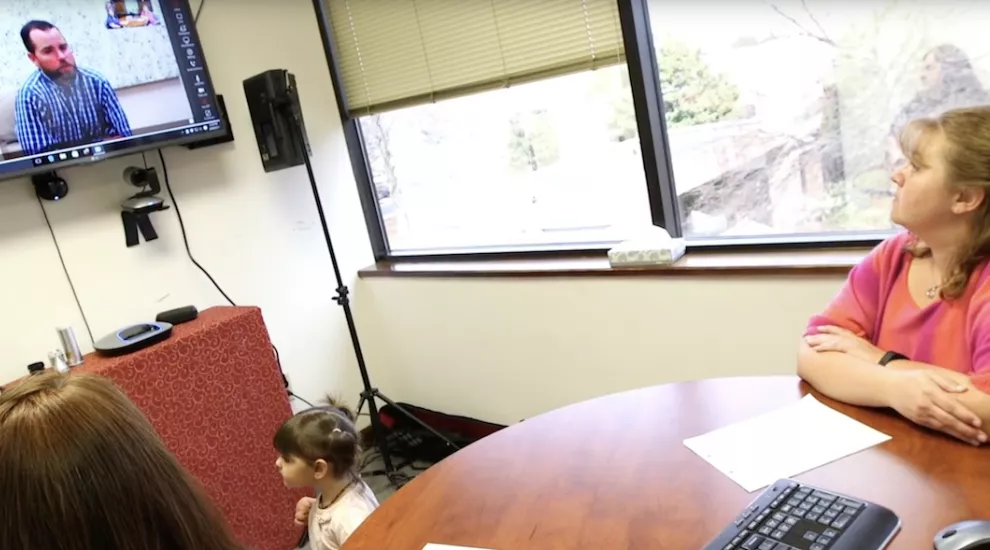
The Brant family was searching for answers.
Baby Kynzie had wide-set eyes, and a small bridge to her nose. Her mother Lindsey recalled, “she was having pretty much all the same problems I was having.”
Lindsey Brant saw doctors for the same issues when she was a child, but she said she never got a proper diagnosis. Twenty-four years later, she learned her daughter’s diagnosis from more than 100 miles away.
Accessing healthcare is becoming more convenient for millions of residents in rural parts of South Carolina, as providers continue to expand telehealth services statewide.
Telehealth is the delivery of health care or health education over distance using technology.
Providers aim to use telehealth to reach rural residents in ways much easier than ever before. The South Carolina Telehealth Alliance (SCTA) groups telehealth providers with academic medical centers and government leaders, with the goal of finding innovative ways to reach underserved areas of the state.
“A lot of telehealth is happening out of need. This specific one in South Carolina being charged by the state legislature is really about developing it, so it’s designed to meet the needs of hospitals and clinics,” said Dr. James McElligott, co-chair of the Alliance’s Advisory Council. He also oversees the Center for Telehealth at the Medical University of South Carolina.
Alliance members include some of the state’s biggest health care systems and hospital networks. All member groups offer telehealth services in some capacity, with some groups rolling out new services in the coming months.
Hearing-impaired South Carolinians use telehealth to see doctors who can sign, a rare commodity. Spartanburg resident Jermaine Green sees his psychiatrist through live video conference.
“I can just sit down and sign with the doctor,” said Green. “If there is anything going on with the medicine, I let the doctor know.”
The South Carolina Department of Mental Health (SCDMH) developed telemedicine to help deaf patients, which allows people like Jermaine to work directly with a doctor from the comfort of his home without the need for an interpreter.
Small hospitals in rural areas are bringing instant emergency care to patients from psychiatrists dozens of miles away. The Abbeville Area Medical Center, with less than 25 beds, uses telehealth to have specialists see patients the day they arrive. Before telehealth, Abbeville-area patients may have waited days to see specialists.
Ernest Shock, the Chief Nursing Officer at the hospital, says SCDMH psychiatrists can be made available to help their patients
“They’re taking care of other patients, but then they can give us their time when we need it, which is maybe three or four times a month in an emergency room,” said Shock. “You could not provide a psychiatrist here full-time to see three or four crisis patients a month.”
While services have expanded significantly since the Alliance’s inception, the finance behind telehealth continue to be an area of concern for providers and insurance companies.
Dr. McElligott says the alliance is determined to find solutions to these problems, so providers can use cutting-edge technology to improve patient care. “There will consistently be focuses on good care and standard of care, and a lot of ways to communicate with patients,” McElligott adds. “What the SCTA will do is coordinate all that, so it’s easier on the providers to adopt it sooner and to make it meaningful and easy to apply the best practices.”
The Brants were in a room in Florence when they got Kynzie’s diagnosis, through a live video conference with a geneticist in his Charleston office.
Jennifer Lynch, who coordinated the Brants’ geneticist appointment from Florence, said telehealth is about helping people.
“If we can make ways or develop strategies to be innovative about the way we see patients, then let’s do it,” Lynch said. “Let’s do what we have to do for our patients.”
